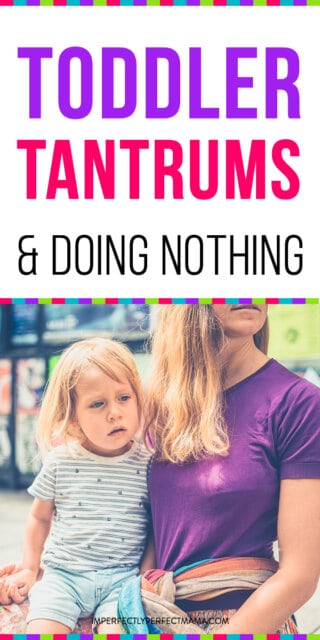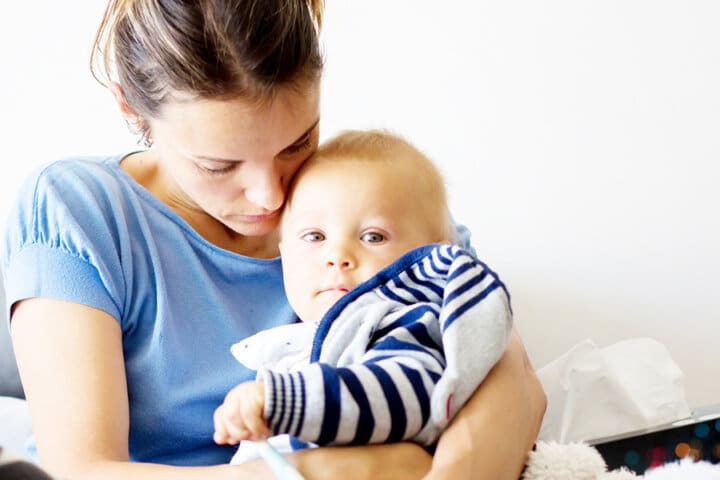Who is wailing like a banshee?

Who is rolling on the floor?
Is it a cat?
Is it a bird?
No, it’s my inconsolable toddler.
What’s upset her, you may ask?
Who knows, will be my honest answer to you.
A Guessing Game: Why Do Toddlers Have Tantrums?
I imagine I won’t be the only mom who does not know why her precious little offspring is beside herself with tears and snot.
Even though they say that mothers always know instinctively what their children are after – it’s not entirely true.
With toddler tantrums, I reckon most moms are blindly guessing, hoping and praying.
1. Emotions and How to Express Them
“Tantrums are no different than thunderstorms or other natural phenomena.” – Shankar Vedantam, npr.com
Growing humans do not know how to express their emotions. That’s why often they would not even remember what might have triggered the flood of salty tears. If they feel like crying then they will cry.
They won’t be able to distance themselves from the situation and say: ‘Hang on a minute! I am overreacting! Mommy meant nothing bad when she said I should not put a fork into a plug socket.’
But that’s why we, mothers, won’t know how to stop that wet and thunderous business: if they don’t know why they are crying, nothing can console them.
2. Trial-and-Error Tactics
And if for one mini-second you decide they are doing it on purpose because they are heartless little manipulators – you’ll be wrong.
That comes much later, closer to teenage years.
Toddlers don’t have a concept of manipulation.
But before you uncork champagne to celebrate the angelic nature of your offsprings, remember this: they pick up a trial-and-error tactic real quickly.
They try something, like screaming and crying once – it works! Then they try it again. And again.
3. Feeling Feelings is Painful

Feeling something uncomfortable is weird and unsettling to little munchkins. That’s another reason why they react the way they do.
Have you ever experienced something unexpected? Like when your boss shows up on his day off just to check up on you.
What would you feel at that moment? I bet you’d wish for the earth to open up and eat him or you. You also might experience a colorful palette of emotions, from embarrassment to anger and back.
That’s how our toddlers feel: something is happening, I don’t know how to deal with it, so I will cry because I’ve sort of mastered that crying business already.
I hope I’ve illustrated well enough that kids don’t know why they are crying. That’s why we fail when we try to comfort them in the midst of it.
But what do science and wise parenting experts say about toddler tantrums?
Toddler Tantrums are a Common Part of a Child’s Development
“Tantrums come from your child not getting what they want. Think of tantrums as their way of telling you they’re upset and frustrated.” – nct.org.uk
National Childbirth Trust(NCT), a parent charity in the UK where I attended antenatal courses, says that it’s quite normal for young humans to experience tantrums.
Those unpleasant outbursts are part of the natural and healthy development of your child.
How amazing is that? Not.
That means every child and every parent would have experienced the joys of tantrums.
Tantrums start at around 18 months and continue until a child learns to communicate well enough to express one’s thoughts so caregivers understand. But until then, don’t be surprised if your child prefers to communicate via crying, screaming, biting or even hitting.
They happen when a child does not get what he or she wants – or when the child is tired, hungry, frustrated or upset. But as I said above – it’s not always easy to guess what’s triggered this behavior.
So now we know that toddler tantrums are normal and here to stay. We also know that unless we can read minds, we won’t be able to tell what’s causing them.
So what do we do when our child is rolling on the floor screaming his head off?
Nothing. I suggest you, mother, do nothing. You’ve heard me right.
The Science Behind Toddler Tantrums
“Understanding that tantrums have a rhythm can not only help parents know when to intervene but also give them a sense of control.” – Green, J. A.
When scientists started researching tantrums, they learned they follow a certain rhythm.
Tantrums start off as a mixture of anger, sadness and frustration. They pick as pure anger, and they finish as sadness.
The advice from the study is to get over the peak (anger) to the end of the tantrum (sadness) as soon as possible.
You can comfort your child during the sadness stage, but not sooner.
As the anger won’t allow them to respond to you. So until they reach the sadness phase – stay back and do nothing.
If There is Nothing You Can Do, What Can You Do?

I want us, moms, to always remember that tantrums are not something our kids do to upset or anger us. They do it because they don’t know what else to do.
So instead of trying to reason with them, we need to be there for them.
In psychotherapy, there is a term called ‘holding or containing.’ It’s about the counselor being present with the client, recognizing and respecting the feelings he or she might be experiencing.
As moms, that’s what we need to do. We need to learn to ‘hold’ our dear ones during tough times without physically holding them.
It’s About You, Not Them
It’s easy to say – do nothing while your child is rolling on the floor in tears.
You might feel helpless or angry towards this little monster.
Pause and allow yourself to register what you are feeling. If it’s indeed anger – be brave and acknowledge that. You know that it’s quite normal to feel angry towards anyone, including your child.
But also think this: your child does not know what anger is. He or she is experiencing pain and something akin to a flattering of a caged bird that is threatening to escape through his chest.
The worst thing you could do is to remain angry or feel sorry for yourself.
The best thing you could do is calm down in time for your child’s sadness stage of the tantrum.
Try these simple ideas:
- Breathe in on a count of seven and out on a count of seven. Repeat a few times.
- Think of something positive or funny. What was the last thing that made you laugh? Think of that. For me, the phrase ‘I am not a cat’ from the recent YouTube video sensation brings on a fit of laughter. Nothing seems as bad when you smiling.
Once your emotions are less bitter, aggressive or sad look at your tiny human. Imagine what he or she might be experiencing at this very moment. Do you feel his frustration? It’s painful, isn’t it?
Put Yourself in Your Child’s Shoes
Holding your child emotionally and not doing much to stop his tantrum does not mean complete inactivity. You could try speaking to your child in a calm voice.
Once your child’s calmed down a bit, imagine yourself in your child’s shoes. Try going down to your child’s level and asking him or her: ‘Are you upset?’ – the question is not about getting the answer because you probably won’t but to show that you care, that you are there to help.
Feel their fear, feel their pain. Try gently touching them if they allow you to.
If they are kicking and screaming and pushing you away – go to another room and imagine you are talking to your child’s tantrum; imagine you are trying to connect to it.
Ask in your own head: ‘What is bothering you?’ And try coming up with several answers. Yet again, not to offer them to your child, but to see it from your child’s point of view.
Final Thoughts
Toddler tantrums are unavoidable. They are just a tricky and painful stage every child has to go through.
But instead of trying to do something about it when your child throws him or herself on the floor screaming – stand back.
Give yourself some time to collect your thoughts and to watch your child’s tantrum. When the peak of angry outburst is over – go to your child and give him or her all your love and support.
But until then, be mindful of your own thought and feelings. Don’t be harsh on yourself as it is not much you can do to stop the tantrum. Just be there for your child.
This stage will eventually pass and you will come out on the other side stronger and closer.




Leave a Reply